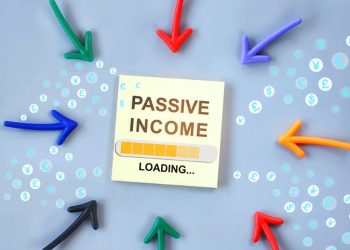Navigating the transition from one employer to another or moving into retirement often involves making important financial decisions. One such critical choice is managing your 401k plan rollover effectively. Understanding how to handle a 401k rollover can significantly impact your retirement savings and overall financial security.
Understanding the Basics of a 401k Rollover
A 401k rollover refers to the process of transferring funds from your existing 401k retirement account into a new retirement vehicle, such as a new employer’s 401k plan or an Individual Retirement Account (IRA). This move is common when changing jobs or retiring but must be executed carefully to avoid taxes and penalties.
Rolling over your 401k allows you to maintain the tax-deferred status of your investments and potentially consolidate multiple retirement accounts into one manageable plan. However, the process involves specific steps and considerations designed to preserve your savings’ integrity.
Why a 401k Rollover is Crucial for Retirement Planning
When transitioning to retirement, ensuring your money remains invested and continues to grow tax-deferred is key. Leaving a 401k with an old employer can expose you to several risks, such as limited investment options, difficulty tracking your funds, or potential fees. Conducting a rollover can mitigate these concerns and provide a clearer picture of your financial standing.
Moreover, rolling over your 401k into an IRA can offer greater flexibility concerning investment choices and withdrawal options, which is particularly important in retirement when managing income streams.
Must-Have Tips for a Smooth 401k Rollover
1. Choose the Right Rollover Destination
Before initiating your rollover, carefully evaluate where you want the funds to go. You generally have three primary options:
– Transfer to your new employer’s 401k plan
– Move into a traditional IRA
– Move into a Roth IRA (with tax implications)
Each option has pros and cons. For example, a traditional IRA typically offers a broader range of investment choices, while a new employer’s plan may have lower fees or matching contributions. It’s crucial to align your decision with your retirement goals.
2. Consider Direct Rollover to Avoid Tax Penalties
One of the most important considerations is how the rollover is executed. Opting for a direct rollover, where the funds move directly from your old 401k to the new account without you handling the money, helps avoid mandatory tax withholdings and penalties.
In contrast, an indirect rollover, where you withdraw funds and then deposit them into the new account within 60 days, can be risky if you miss the deadline or fail to deposit the full amount, triggering taxes and possible penalties.
3. Understand the Timing of Your Rollover
Timing matters. If you are still working and not yet 59½ years old, withdrawing money prematurely can result in a 10% early withdrawal penalty plus income tax on the distribution amount. Ensuring you perform the rollover promptly after leaving your job can avoid unnecessary fees and keep your retirement plan intact.
4. Keep Track of Your Investments
Transferring retirement funds is also an opportunity to review your investment allocation. Your risk tolerance and retirement timeline are evolving factors, so adjusting your portfolio to reflect your current financial goals is wise. This might mean shifting toward more conservative investments as you approach retirement.
5. Seek Professional Guidance
Financial advisors or retirement specialists can help you navigate the complexities of a 401k rollover. They can analyze your financial situation, offer personalized strategies, and ensure you avoid common pitfalls that could jeopardize your retirement savings.
Avoiding Common 401k Rollover Mistakes
Failing to roll over your 401k properly can have serious consequences. Common errors include:
– Missing the 60-day deposit window on indirect rollovers
– Not rolling over the full vested balance
– Ignoring potential tax consequences when converting to a Roth IRA
– Overlooking fees in the new plan
Being vigilant and informed can protect your hard-earned savings from unnecessary losses.
The Long-Term Benefits of a Responsible 401k Rollover
Effectively managing your 401k rollover can offer greater control over your retirement funds, maximize growth potential, and streamline your retirement portfolio. This financial maneuver is not just about moving money; it’s about setting the stage for a secure, stress-free retirement.
Maintaining tax advantages and reducing fees where possible means your money can work harder for you during retirement years. The peace of mind that comes from knowing your retirement accounts are efficiently managed is invaluable.
—
By approaching the 401k rollover with awareness and careful planning, you can ensure a smoother transition into retirement. Each step you take now can significantly influence your financial well-being later, so take the time to understand your options and choose the path best aligned with your retirement vision.








































